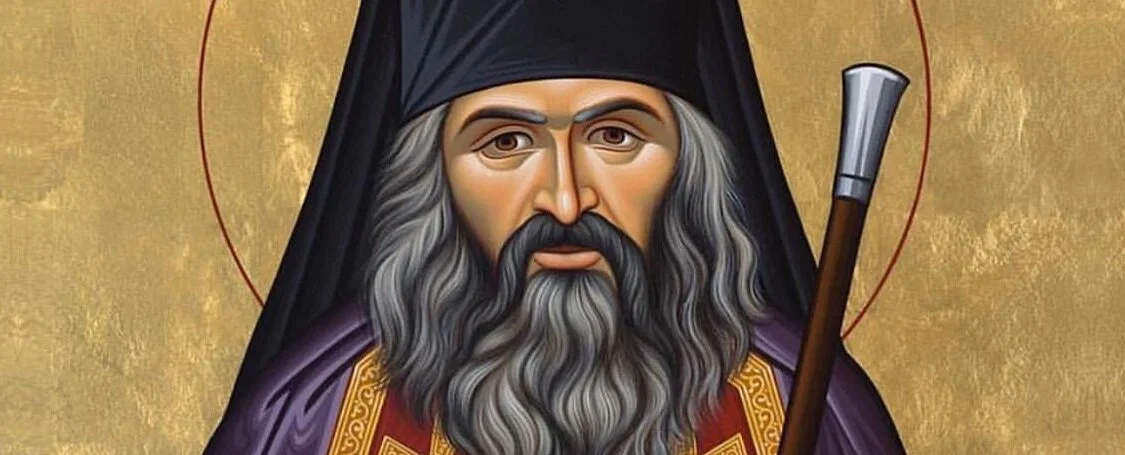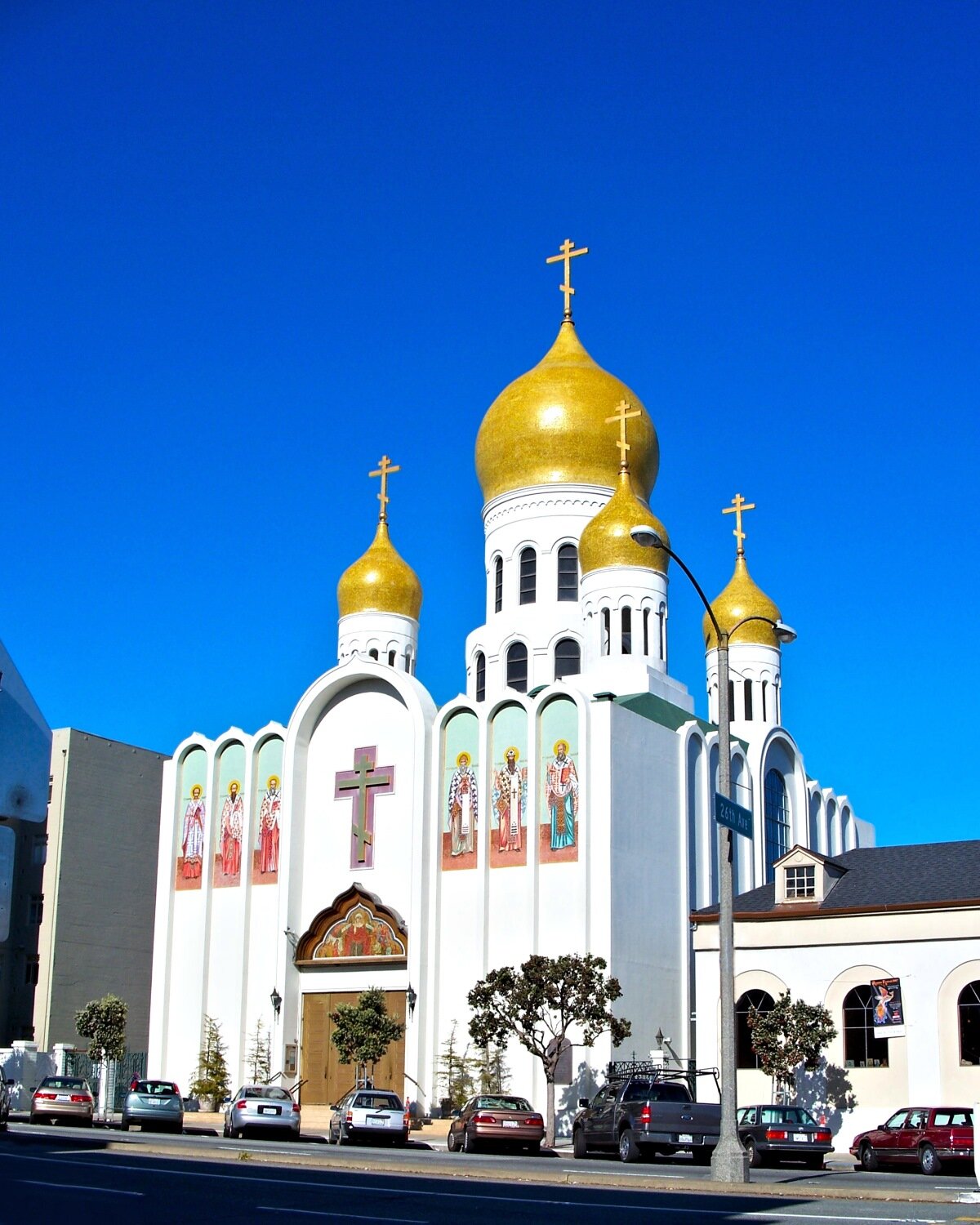by Fr Gabriel-Allan Boyd
In San Francisco, at the Joy of All Who Sorrow Cathedral, reposes the body of a modern-day saint. His relics are laying there incorrupt, which means his body hasn’t decayed in 54 years, since his death on July 2nd, 1966.
He was born in Russia in 1896. Since he suffered the ill effects of a wretched appetite, persistently poor health plagued his childhood. Nevertheless, he had a voracious hunger to know the things of God. As the Russian Revolution did its dirty work, taking over the country, his family fled to Serbia (Yugoslavia) to escape the devastations of the Bolsheviks. There he embraced a life of spiritual struggle, attained a theological degree, and was eventually ordained a priest. From the time of his entry into the ascetical way of life, he became very strict with himself, never sleeping in a bed, but rather, sleeping only briefly in a chair, or prostrated before the icons. He ate only one meal per day, waiting until the evening to break his daily fast. As a seminary professor in Serbia, some of his students recalled his advocacy for an astonishing way of life, encouraging them to devote six hours each day to divine services, plus six more hours to personal prayer, plus six more hours to good works, and leaving the last six hours to rest (“resting” included eating and bathing as well as sleeping). It was a way of life that he was very strict to impose upon himself, sometimes even more rigorously, foregoing some of that sleep, in order to secretly apply himself to good works at night.
He was eventually sent to China to serve a community of Russian emigrants who had settled there. In 1934, after having served for 12 years as a priest in China, he was sent to the larger city of Shanghai. But he received a letter, temporarily calling him back to Serbia. One of Saint John’s acquaintances encountered him on the train in Serbia. When asked where he was going, John replied, “I’m going to straighten out a mistake. I’ve gotten a letter meant for some other John whom they intend to make a bishop.” The same acquaintance met him again on his return journey and asked if he’d been able to resolve the misunderstanding. John answered, “The mistake is much worse than I thought...they made me a bishop.”
He returned thereafter to Shanghai, to serve not only the Russians who were working in that community, but also a number of native Chinese Orthodox, to whom he would furthermore offer the Divine Liturgy in their local dialect of Chinese. One of his preeminent Episcopal roles in Shanghai, was to create a sense of unity among the various Orthodox nationalities who had settled in the area. Eventually, because of this unity, he was additionally able to build a large cathedral church in Shanghai that was dedicated to an Icon to the Mother of God called, “Surety of Sinners.” This cathedral stood out as a significant architectural adornment to the city, since it also included a large bell tower and an impressive parish house. Additionally, utilizing fresh expressions of Orthodox unity, Saint John was able to inspire and develop impressive components for additional ministry to his surrounding community, including the building of more churches, hospitals, and orphanages in and around Shanghai. With amazement, people there remarked that he was constantly praying and serving the daily cycle of services, while also visiting the sick with the Holy Gifts, living a life of intense activity. They said that even in the coldest days, he would often walk around barefooted. Yet to keep people from extolling his virtues, he would pretend to act like he was addle-minded, with no idea of what he was doing.
After the Communists began taking up power in China, at the end of World War II, Bishop John became a kind of Moses—leading his community in an Exodus from Shanghai in 1949. He labored tirelessly to evacuate his flock to safety, first to the Philippines, helping some 5,000 refugees to take up residence within a camp on the island of Tubabao. From there he helped them travel to various other western countries. As he came to the United States, he also journeyed to Washington, D.C., urging amendments to the law that would allow these refugees to enter and become American citizens. During his brief time in Washington D.C., he was able to establish a parish there, dedicated to St John the Baptist. Then, in 1962 he was assigned to the role of Archbishop of San Francisco.
Saint John Maximovitch’s ascetical struggles and constant prayer throughout his life as a bishop had a mixture of reactions from those who were under his leadership. While some people absolutely revered him, there were others who ridiculed him severely, calling him a fool, accusing him of handling his episcopal role with incompetence and saying that he neither dressed, nor behaved with the kind of dignity and grandeur befitting a bishop. Throughout his life and even long after his passing, there have been an extraordinary number of miraculous healings and other miracles attributed to his powerful prayers. And the degree of prayerful love he showed to his people was legendary. On one occasion, a cathedral caretaker in China had heard some strange noises in the church after midnight. When he went to investigate, he discovered Bishop John standing in the bell-tower, looking down upon the city of Shanghai, intensely praying for his people. Years later, when he visited Holy Trinity Monastery in Jordanville, New York, his host found Saint John walking through the halls of the monastery, standing outside the door of each room and praying for whoever was sleeping behind each door. After he’d prayed outside each room, he returned to the beginning of his circuit and began praying again...thus spending the entire night offering intense intercessions for each of the students. While serving as archbishop in San Francisco, there were accounts from people, seeing him walking barefoot in the rain, up and down the hilly streets of the city, stopping in front of each home to pray for the people who lived inside.
Even as Archbishop of San Francisco, he lived in almost absolute poverty. His appearance caught everyone off-guard. His clergy cassock was made of blue Chinese “peasant cloth.” It was a favorite of his because it was a gift from the orphans who had been in his care in Shanghai...crudely decorated with crosses that they had hand-stitched for him. His Bishop’s “miter” was often a cloth cap to which he had glued paper icons. Even in the United States, although serving the Divine Liturgy every day, he still went barefoot...no matter what season it was. Eventually, after he was hospitalized with an infected foot, his Metropolitan ordered him to begin wearing shoes. So, from that day on, he took up wearing sandals. Thus, he was an embarrassment to those who thought a bishop needed to have a more dignified appearance. Nevertheless, among the people from his flock who truly knew him, throughout the world, there were always those who recognized that even while he was still living, he was a spiritual hero...a shining exemplar of God’s self-sacrificial love...an Apostle. Many times, this involved nothing more significant than his desire that the people around him could be unified with God, and his willingness to enter into mindful prayer on their behalf. That kind of loving, mindful prayer is something that’s within reach of each of us, no matter what our occupation.
In anticipation of his eventual passing, he wrote to his flock, “Tell everyone, even though I have reposed, I am still alive.” At 70 years old, on July 2nd, 1966, he reposed in the Lord. Afterward, a steady stream of healings and other miracles have been accomplished through his continued prayers. In 1996 he was glorified as a Saint of the Church. His incorrupt and wonder-working relics can be venerated at his cathedral, “Joy of All Who Sorrow,” in San Francisco. Whenever you visit there, the sense of his continuing prayers is palpable (you can feel it in the air), and you know that he’s praying for you, so that you too would become more joyfully unified with God. Even from afar, wherever you are, when you ask him, he’ll be praying for you. Saint James, in his universal letter says that, “The prayers of a righteous man avails much.” And there are few more righteous than St John Maximovitch. Therefore, ask for him for his prayers on your behalf, that by God’s grace, you may learn to pray for others around you, like him.






